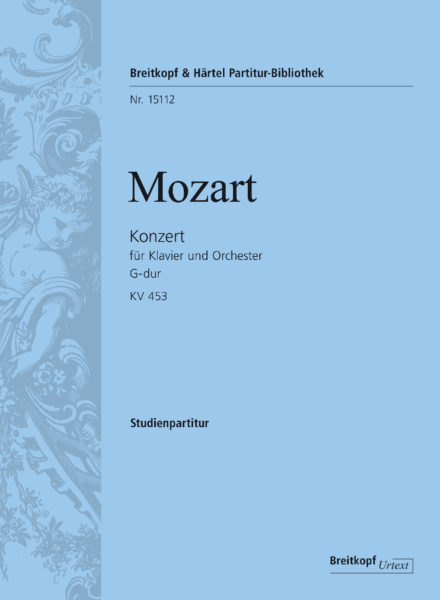Wolfgang Amadeus Mozart (1756–1791) Klavierkonzert [Nr. 17] G-dur KV 453
Urtext herausgegeben von Stephan Hörner [Klav,Orch] Dauer: 30 '
Solo: Klav – 1.2.0.2 – 2.0.0.0 – Str
In Kooperation mit G. Henle Verlag
EB 10765 ist in Partitur gedruckt; zur Ausführung werden zwei Exemplare benötigt.
Die Original-Kadenzen finden Sie unter
Mozart, 36 Kadenzen zu eigenen Klavierkonzerten.
Unsere Ausgabe EB 8577 enthält Ferruccio Busonis Kadenzen zum Klavierkonzert G-dur KV 453.
Nachdem Sie die gewünschten Ausgaben in den Warenkorb gelegt haben, können Sie dort die benötigte Stückzahl bei Bedarf noch anpassen.
Das Konzert KV 453 erfreute sich schon zu Lebzeiten des Komponisten großer Beliebtheit und war durch Abschriften und eine Druckausgabe weit verbreitet. Die Quellenlage ist also vielfältig und dennoch eindeutig: Primärquelle ist das wiederaufgefundene Autograph, das nach 1945 als verschollen galt und auch der Neuen Mozart-Ausgabe nicht zur Verfügung stand.
Für die editorische Qualität der Neuausgabe bürgen nicht nur Schiffs ausgefeilte Fingersätze und seine stilsicheren Kadenzen, sondern auch der Mozart-Spezialist Stephan Hörner, den der Henle-Verlag mit dieser Urtext-Edition betraut hat.
Jedes Werk wird von einem Experten nach einheitlich festgelegten Richtlinien herausgegeben. Dabei werden in erster Linie Mozarts handgeschriebene Partituren als wichtigste Quellen herangezogen. In manchen Fällen waren diese zum Zeitpunkt früherer Editionen noch nicht zugänglich. Heute weiß man außerdem, dass neben den Autographen auch frühe Stimmenabschriften und Drucke wichtige Informationen zum Notentext enthalten.










 Blättern
Blättern
